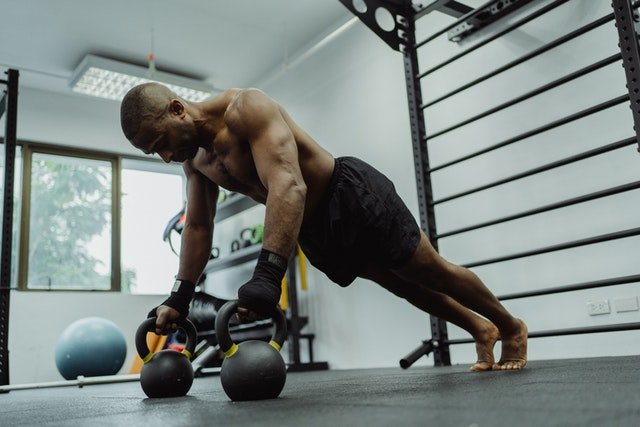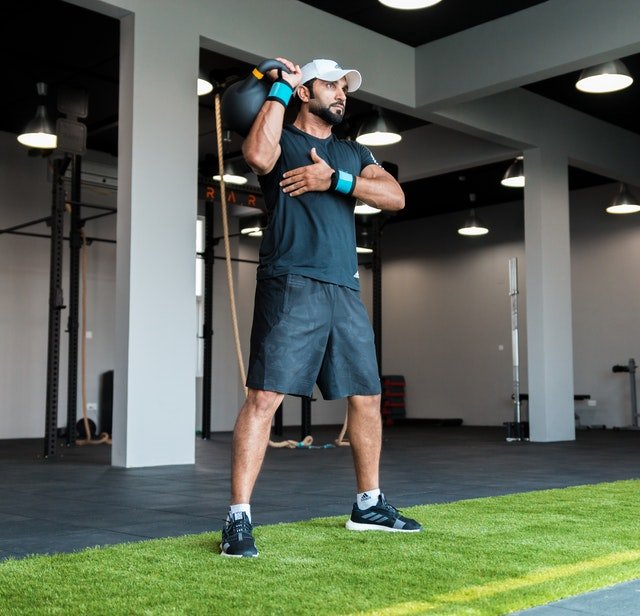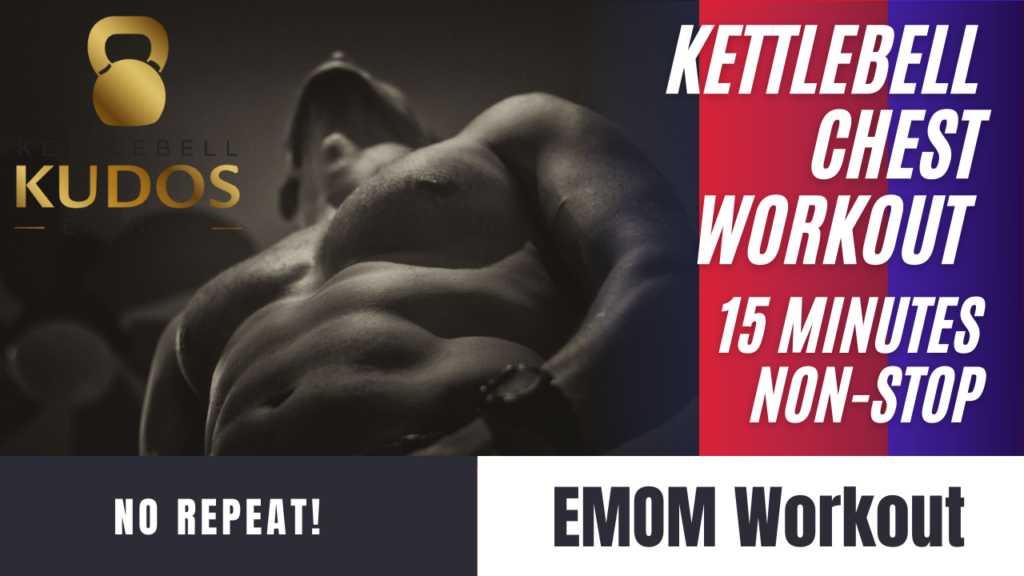Are Kettlebells Hard On Joints? (Here’s 5 Things To Consider)
If you have any joint issues or if you are thinking of using kettlebells, you may be wondering if they are hard on your joints or not?
Due to the ballistic nature of kettlebell exercises, its well worth finding out if they are something you are able to work with.
Kettlebells have become very popular in recent years and it’s easy to understand why. They offer a lot with just the use of one piece of equipment.
Are Kettlebells Hard On Joints? Short answer…
Kettlebells can be hard on your joints, especially if you are new to using them and you have poor technique. It goes without saying that getting the correct form and posture for any kind of exercise is crucial. As it will help prevent any kind of injury short or longterm. On the flip side, if you are exercising correctly and using the right form, kettlebells will NOT give you any joint issues. Interestingly, kettlebells will not only help improve your posture and core, but also the stabiliser muscles too, which will strengthen the joints. Do the exercises right, choose the right exercises, plan properly, progress properly etc…so NO, they are not bad for joints. In fact, they’re the opposite and are extremely good for them. If you have joint issues already, it’s worth getting advice from a professional to get a tailor made program or an alternative fitness plan (without kettlebells) that works for you.
Joint pain is a very common problem with many possible causes, but it’s usually a result of injury or arthritis.
In older people, joint pain that gets steadily worse is usually a sign of osteoarthritis. It may affect just one joint or many.
If you are feeling any kind of joint pain, it’s well worth getting it looked at by a doctor ASAP to diagnose the issue, should there be one.
Joint pain isn’t uncommon for people who exercise, as the body has to deal with regular inflammation and general wear and tear.
Are kettlebells any different, what can you do to reduce pain if you had joint issues in the past and are they hard on joints in general?
1. Technique Is Everything
Kettlebells are quite demanding on your hips, back, knees, neck and shoulders. If you have any joint issues like arthritis or pain in your knees or back, seek the advice of a professional (personal trainer/certified kettlebell coach) to get a personalised program that suits you and your needs/goals.
With any type of exercise, it’s very important to have the correct form whatever you are doing.
Kettlebells are no different to any other piece of equipment in that sense, but kettlebells feel and move differently to regular equipment such as barbells or dumbbells.
With a kettlebell you are always using many muscles at once to control it, because of the way they are balanced.
This makes your body work harder than it normally would with regular equipment. As most of the weight of the kettlebell is in the “cannon ball” part and not the handle, as is the case with dumbbells.
Which means the balance is offset and can take some time to get used to.
With any kettlebell exercise you do, make sure you take time to perfect your technique and get help with it if you need to.

2. High Reps And Low Resistance?
If you are starting out on your kettlebell journey, you might want to begin by doing high repetitions with light weight, as this will increase your endurance, while getting used to them. Whereas low repetitions with heavy weight increases strength.
This method of training will work better for those that do have joint issues, but are ok to train. One of the biggest mistakes people make with kettlebells is going too heavy too soon.
This is where you will more than likely give yourself an injury, which will not only take you out the game for how ever long the rehab is, but this may also put you off using kettlebells in future, which would be a massive shame if that’s the case.
One thing to remember is that any form of exercise done right is good for the joints as it increases strength and flexibility, reduces joint pain, and helps combat/prevent so many other symptoms.
3. Exercises To Master
Kettlebell swings or any movement with weights, should be done so that the joints are not fully extended or even hyper extended.
Movements should be controlled…. and the body remains relatively stable. Done this way, with weights that are not too heavy, means there shouldn’t be any problem with the joints.
All kettlebell exercises can be categorised into two groups: Grinds or Ballistics.
Grinds involve kettlebells being lifted up and down (presses, squats, windmills, get-ups etc).
Ballistics involves the kettlebell to be swung through two-planes of motion (swings, cleans and snatches).
For weight loss, improving conditioning and if you have any joint issues, ballistics should supersede grinds.
Ballistics using two heavy kettlebells are good for boosting testosterone levels and building strength, but the bulk of a session should be made up of grinds.

Compound Combinations
For kettlebell strength, you want to be doing more compound exercises, rather than the isometric variety.
Compound exercises are movements which uses multiple muscle groups within the one exercise.
As you will know this type of movement is bread and butter for any kettlebell user, with such exercises that have already been mentioned above (swings, cleans, snatches etc).
Take a traditional kettlebell swing, it uses a variety of muscles within the one movement such as: Hamstrings, quadriceps, glutes, back and shoulders.
As you know, isometric exercises specifically “isolate” whichever muscle you are targeting when lifting.
Doing compound exercises also work the stabiliser muscles more than any isometric exercise would.
In any kind of movement, stabiliser muscles act to stabilise one joint so the desired movement can be performed in another joint.
These muscles aren’t usually directly involved in a movement, but work to keep you steady so that your primary muscles can do their job.
Functional Movements/Training
Functional fitness also ties in to those compound movements we mentioned earlier.
Functional fitness involves doing movements that imitate everyday actions, these incorporate multiple muscles groups at the same time, to build strength, stability and mobility across the body, allowing the body to move and operate as it should.
Doing these type of exercises with a heavy kettlebell will have the same desired effect, just as it would when using a barbell or other weights.
Some common functional exercises include:
- Bodyweight squats
- Jumping jacks
- Jumping, lunging, or box jumps
- Jump squats
- Lateral bounds (running from side to side)
- Movements done while balancing on one leg
- Push-ups
- Walking lunges
Adding a heavy kettlebell to some of these exercises will improve your strength drastically, but always remember to have the correct form to prevent any potential injuries or harm to your joints.
Obviously, I can’t condone or advise doing jumping jacks with kettlebells, that is the recipe for disaster.
4. Joint Issues In The Past?
If you have had or currently have any kind of joint issue, you must seek the advice from your doctor before attempting to train with kettlebells.
This is just a precaution, there is nothing wrong with giving it a try, if you feel your body is able to. However, only you know the severity of the issue you have or are having.
Suffice to say that if you do start training with kettlebells, don’t go too hard too soon.
Just like any other exercise with any tool can be bad or good, so can exercises with kettlebells be good or bad.
In the end, it depends on whether you use them properly and program properly to meet your goals through a proper progression with adequate rest and recovery, etc.
So, assuming you do the exercises right, choose the right exercises, plan properly, progress properly, and so on…they are not bad for joints, in fact, they’re the opposite, they are extremely good for the joints.

5. Listen To Your Body
This is another simple instruction to follow, yet lots of people don’t listen to their body when its telling them there’s an issue.
Sometimes its good to push through and workout, even when you didn’t really feel like it.
Then other times, doing this can result in a serious injury.
The same philosophy applies, if you have any kind of joint problem.
If the joints are already compromised, then the kettlebell could just finish off the damage and worsen the overall pain and the situation.
Kettlebells shouldn’t cause problems necessarily, unless you have an injured or degenerated joint.
People have found that kettlebell training builds their stabiliser muscles and actually strengthens their joints.
So think next time before you push through the pain barrier, as it may cost you.
Final Thoughts…
Kettlebells, if used correctly won’t be any harder on your joints than other pieces of fitness equipment.
However, make sure that you perfect your technique with the correct weight and also the right volume of training, preparation and recovery.
Even if you are a more “mature” individual, just take extra care and attention with the above and you shouldn’t have any problems either.
As we get older the body does deteriorate, as well as the fact we are all carrying knocks and injuries from days gone by, there’s nothing wrong with continually training to keep yourself in great condition.
Just be smart about it and you’ll reap the rewards to keep pushing further, the older you get.
The best of luck to you all and never stop moving!
Take Further Action?
If you enjoyed this, then please check out the YouTube channel, with over 60 workouts which include the use of kettlebells, resistance bands, dumbbells and even body weight exercises too.
Don’t forget, I will be adding more workouts weekly to help you stay fit and healthy at home with just the use of a kettlebell.
With workouts of all types, for all fitness levels. You know that we have you covered, so stay tuned for more.
If you enjoy sport and use CBD to help with your recovery in between gruelling workouts, then your are in the right place. Here at Sport CBDs, we train hard and recover the best way possible…
We have regular workouts (check out the YouTube channel), CBD news and CBD products to help you gain that edge!
If you wanted to check out the reputable CBD we have on offer here at the site, then please head to the Sport CBDs Store. We also do fitness clothing and yoga accessories too.
Until next time, all the best…


